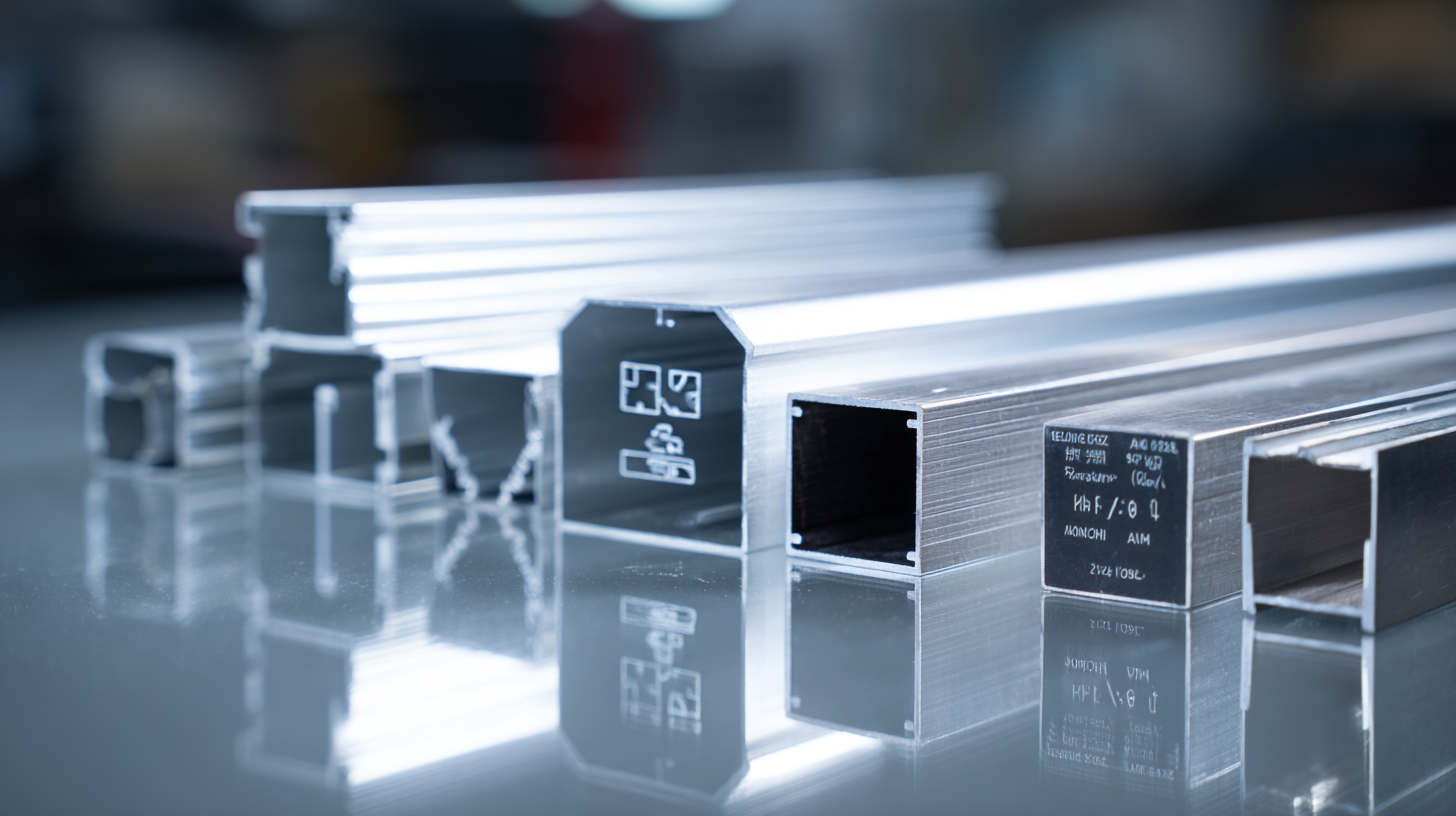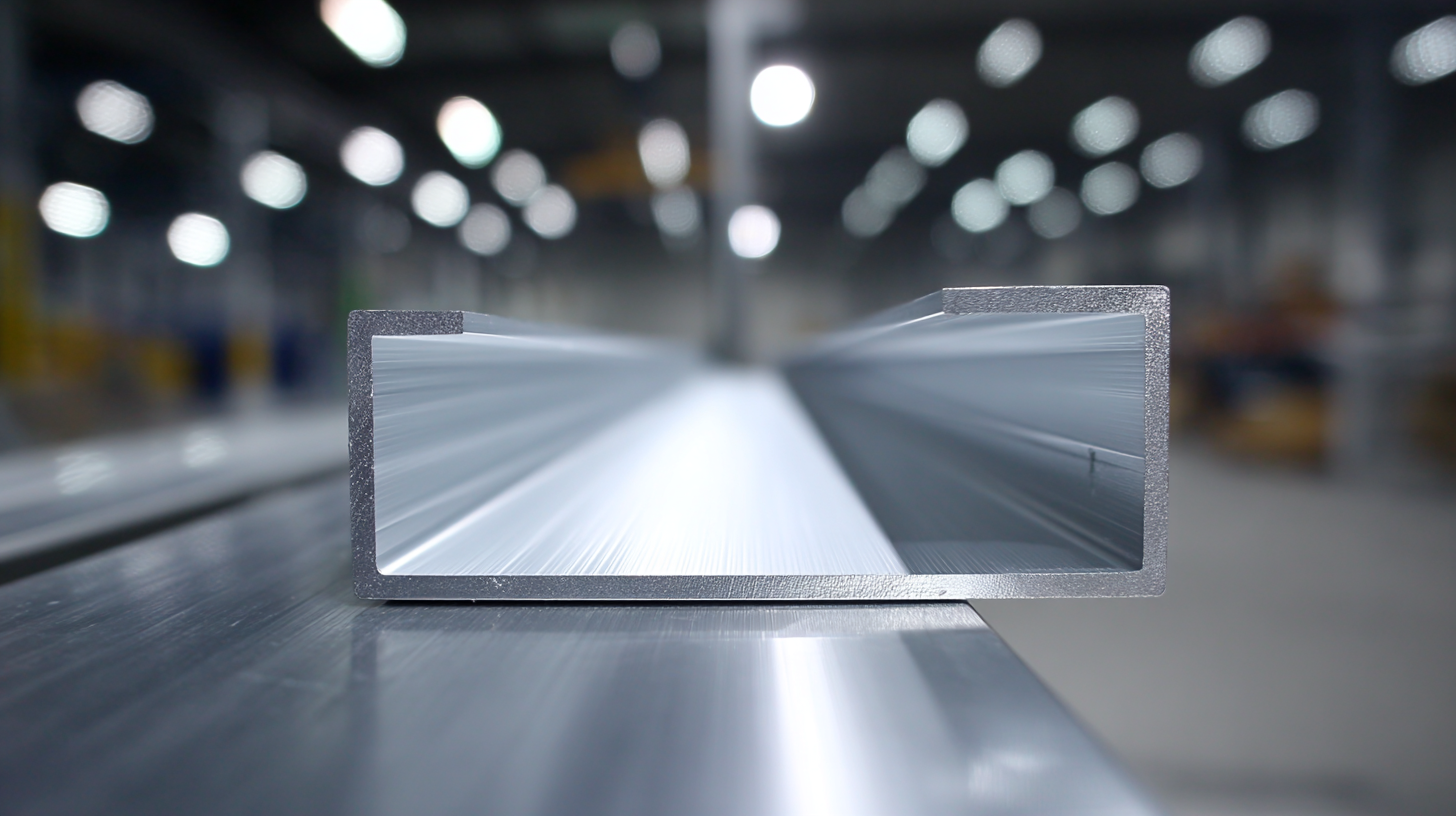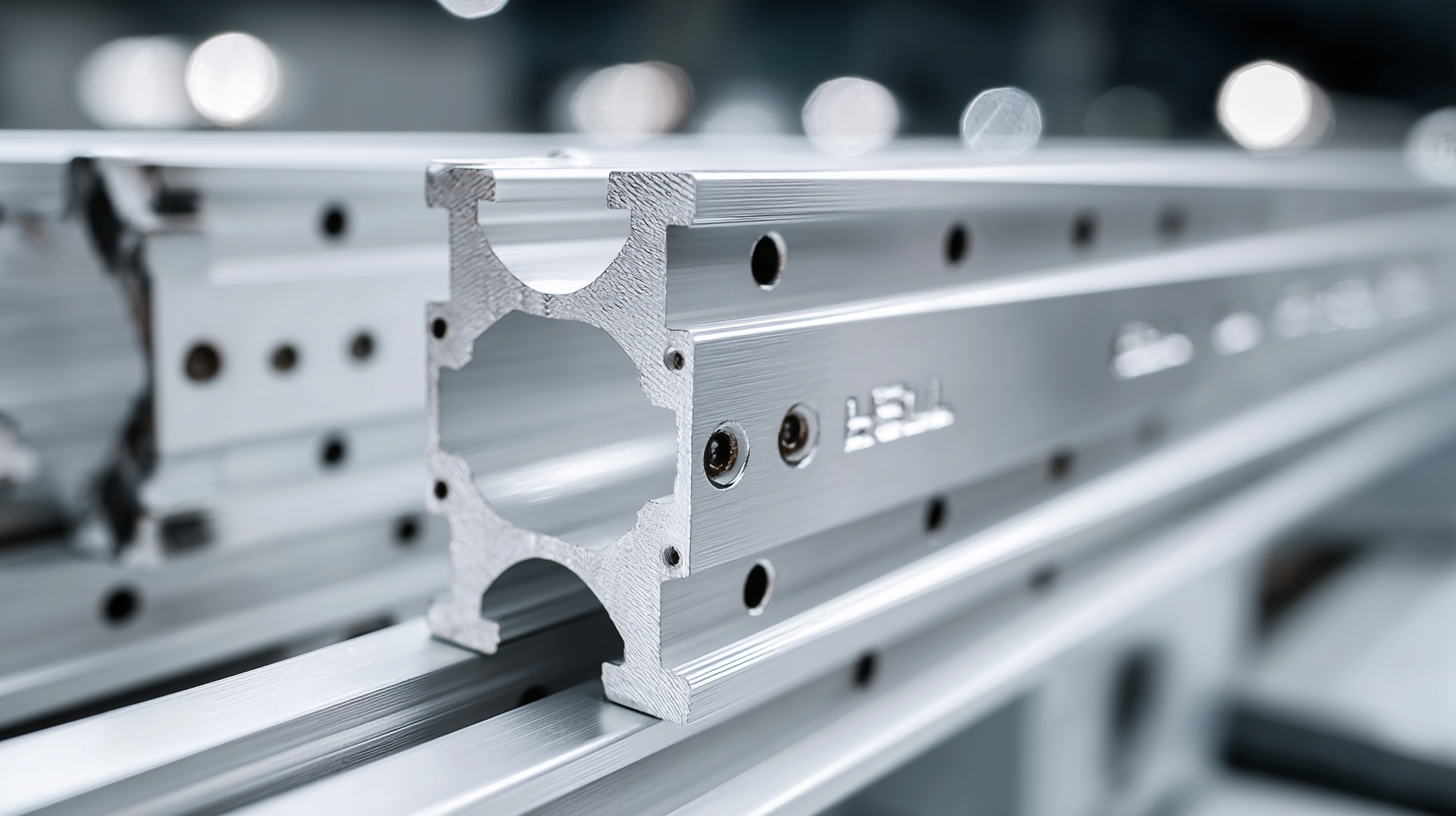In the fast-evolving landscape of modern manufacturing, efficiency and precision remain paramount.
 Aluminum moulding profiles have emerged as a cornerstone of innovation, offering distinct advantages across various sectors.
According to a recent market report by Research and Markets, the global aluminum profile market is projected to reach $92 billion by 2026, driven by the increasing demand for
lightweight, durable materials in industries such as automotive, aerospace, and construction. These profiles not only enhance product performance but also streamline production processes, reducing waste and costs.
As manufacturers leverage the benefits of aluminum moulding profiles, it is crucial to understand the characteristics and applications of different types, ensuring optimal utilization in various product designs.
This blog will explore the diverse offerings of aluminum moulding profiles and their specific suitability, unlocking new levels of efficiency in manufacturing practices.
Aluminum moulding profiles have emerged as a cornerstone of innovation, offering distinct advantages across various sectors.
According to a recent market report by Research and Markets, the global aluminum profile market is projected to reach $92 billion by 2026, driven by the increasing demand for
lightweight, durable materials in industries such as automotive, aerospace, and construction. These profiles not only enhance product performance but also streamline production processes, reducing waste and costs.
As manufacturers leverage the benefits of aluminum moulding profiles, it is crucial to understand the characteristics and applications of different types, ensuring optimal utilization in various product designs.
This blog will explore the diverse offerings of aluminum moulding profiles and their specific suitability, unlocking new levels of efficiency in manufacturing practices.
Aluminum moulding profiles have undergone significant evolution in modern manufacturing, driven by the need for lightweight yet durable materials. Initially, traditional metal profiles dominated the industry, but the rise of aluminum has transformed how products are designed and fabricated. The lightweight nature of aluminum not only enhances mobility and ease of handling but also reduces energy consumption during transportation and installation, creating a more sustainable manufacturing process.
In recent years, advancements in technology have further refined the production of aluminum profiles, allowing for more complex designs and customizations. Enhanced extrusion techniques and improved surface treatments give manufacturers the flexibility to create profiles that meet specific performance requirements and aesthetic preferences. Additionally, aluminum's natural resistance to corrosion has made it a preferable choice in various applications, from construction to automotive sectors, ensuring longevity and reduced maintenance costs. This evolution signifies a shift towards embracing innovation in manufacturing, where efficiency and adaptability are paramount.
Aluminum moulding profiles are revolutionizing modern manufacturing with their efficiency and cost-effectiveness. One of the primary advantages is their ability to facilitate the production of complex shapes while significantly reducing the number of parts required. For example, in the automotive industry, extrusions are increasingly used in critical applications such as bumper beams and crash components, leading to not only structural integrity but also reduced assembly times. According to recent industry reports, using fewer parts can lead to a reduction in manufacturing costs by up to 30%, highlighting the economic benefits of aluminum extrusions.
**Tip:** When designing parts, consider the ability of aluminum extrusions to create integrated features that traditionally might require multiple components. This not only streamlines production but also enhances the overall strength of the product.
Additionally, aluminum's lightweight nature makes it an ideal choice for applications where weight reduction is essential, such as in automotive and aerospace industries. The shift towards aluminum has been noted to improve fuel efficiency and increase performance metrics. A lean manufacturing approach, combined with aluminum extrusion technology, can further enhance operations by minimizing waste and improving product quality, as supported by case studies utilizing the DMAIC methodology to reduce defects.
**Tip:** To optimize the benefits of aluminum components, invest in training for your design team to fully understand extrusion possibilities. This can lead to innovative designs that leverage the unique properties of aluminum, reaping both performance and cost savings.
| Advantage | Description | Impact on Manufacturing |
|---|---|---|
| Lightweight | Aluminum profiles are significantly lighter than steel alternatives, reducing transportation costs. | Enhances ease of handling and assembly. |
| Corrosion Resistance | Aluminum naturally forms a protective oxide layer, preventing rust and decay. | Increases durability and longevity of products. |
| Customization | Aluminum can be easily extruded into complex shapes for specific applications. | Allows for tailored manufacturing solutions, optimizing design and functionality. |
| Recyclability | Aluminum is highly recyclable without loss of quality, promoting sustainability. | Contributes to reduced waste and environmental impact. |
| Thermal Conductivity | Aluminum efficiently transfers heat, making it ideal for temperature-sensitive applications. | Enhances performance in heating and cooling systems. |
In the evolving landscape of manufacturing, the choice of molding material plays a pivotal role in determining product efficiency and durability. As we approach 2025, a comparative analysis of aluminum versus other molding materials highlights the distinct advantages of aluminum profiles. Their inherent lightweight nature allows for reduced energy consumption during transportation and installation, creating a favorable impact on overall manufacturing costs.
Aluminum also boasts superior resistance to corrosion, ensuring longevity and minimal maintenance needs compared to traditional materials like steel or plastic. This characteristic is particularly advantageous in industries requiring high-performance durability, as aluminum components can withstand various environmental factors. Furthermore, the recyclability of aluminum positions it as a sustainable choice, aligning with the growing emphasis on environmentally friendly manufacturing processes.
Tips:
When selecting molding materials, consider the specific application requirements—lightweight and corrosion-resistant options could save you time and money in the long run. Additionally, think about the sustainability factor of your choices. Opting for recycled aluminum not only enhances brand reputation but also caters to the increasing consumer demand for eco-friendly products.
Aluminum moulding profiles have emerged as a pivotal element in modern manufacturing, offering unparalleled versatility across various sectors. According to a recent report by the Aluminum Association, the demand for aluminum in industrial applications is set to grow at a compound annual growth rate (CAGR) of 4.5% through 2026. This growth is partly attributed to the lightweight yet durable nature of aluminum, which facilitates efficiency in production processes without compromising structural integrity.

In the automotive industry, for instance, aluminum moulding profiles are increasingly used for lightweight components that enhance fuel efficiency and performance. A study from the International Aluminium Institute indicates that using aluminum can reduce vehicle weight by up to 50%, leading to a substantial decrease in carbon emissions. In addition, these profiles are finding innovative applications in the construction sector, providing solutions for energy-efficient buildings. As reported by the National Institute of Standards and Technology, aluminum-clad windows and doors contribute to energy savings of around 15-30% compared to traditional materials, illustrating the environmental and economic benefits of adopting aluminum moulding profiles in modern manufacturing practices.
As we look towards 2025, the landscape of aluminum moulding profiles is set to evolve significantly, driven by advancements in technology and increasing demand for sustainable manufacturing practices. According to a recent report by the Aluminium Association, the global aluminum extrusion market is projected to grow at a CAGR of 5% from 2020 to 2025, highlighting the rising importance of lightweight and durable materials across various industries. This trend is not only reshaping product designs but also influencing production methods, pushing manufacturers to adopt more efficient and environmentally friendly processes.
Innovations in aluminum moulding profiles are also expected to focus on customization and versatility. With advancements in 3D printing and CNC machining, manufacturers can now create complex and tailored profiles that meet specific customer needs. A study from Research and Markets forecasts that the demand for custom aluminum profiles will surge by 30% over the next few years, reflecting the shift towards more personalized solutions in sectors such as automotive, aerospace, and construction. These developments herald a new era of manufacturing, where efficiency and adaptability are paramount, marking a definitive pivot towards a more integrated and innovative approach in the aluminum industry.





